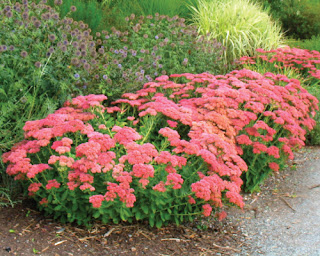You might know Cyclamen as indoor plants and might have them in your house already. But did you know that there are flowering plants from the same family for your (shade) garden available? Very attractive ones that are blooming when many other flowers in your garden fade and very little is in bloom. Hardy cyclamen can help fill this gap by providing color from flowers while adding interest from leaf shapes and patterns.
'Cyclamen Coum' are smaller, garden-adapted relatives of the florist's cyclamen (C.persicum). They are both native to Mediterranean regions and are the easiest species of cyclamen to grow in the home garden. They are hardy to Zone 4 - 9 and grow best in well-drained soil rich in humus, and located in areas of dappled (not heavy) shade among trees and shrubs. They are moderately drought-tolerant, very long-lived, and thrive with very little care.
Just make sure the plant has excellent drainage. When you water the plant, water from below the leaves so that the water doesn’t touch the stems or leaves. Water on the stems and leaves can cause them to rot. Soak the soil thoroughly and let any excess water drain away.
To grow cyclamen, plant tubers in early fall, about two centimeters deep, and at least ten to twelve centimeters apart. Low mounds are their ideal habitat. The tubers do not multiply, but plants will self-sow, forming colonies. In summer the plants go dormant and need a little moisture. Watering in late summer and early fall breaks dormancy and encourages new growth.
Deep to light pink fragrant blossoms on stems 10 to twelve centimeters in height appear from late August through November, just before leaves develop. In cultivation, white blossoms develop on some plants. Their foliage lasts until late spring and in a colony creates an almost evergreen ground cover.
Cyclamen perform colorfully after other plants have stopped flowering, which gives you an extra-long season of shade-loving blooms - in a variety of hues. Blooms resemble charming butterflies and sit atop petite stems surrounded by lovely marbled foliage.
Hardiness Zone 3 to 9
Partial to Full Shade
Bloom Time: Late Summer to Late Fall
Size: 20+ cm wide, Height 10-12 cm
.
<><><><><>
.





















